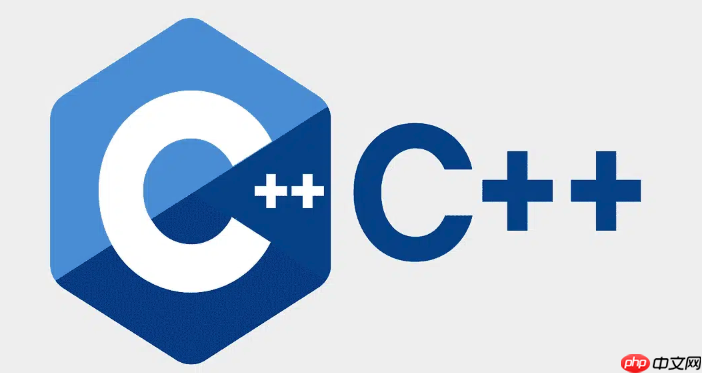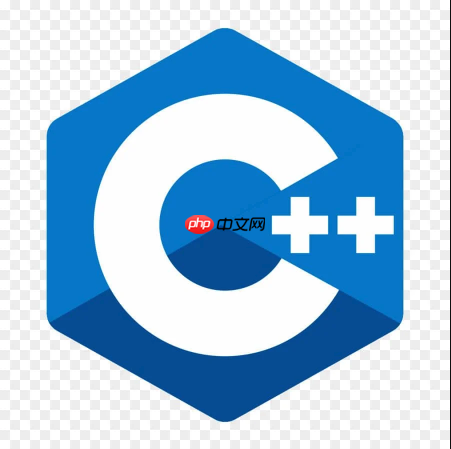要编写c++++日历程序,核心是计算某年某月的第一天星期和该月天数,并格式化输出。首先需判断闰年的函数;其次实现计算每月天数的函数;接着使用zeller公式或递推法确定星期几;最后按格式打印日历。处理边界情况和错误时,应检查输入有效性并返回错误码;优化性能可采用查表法减少重复计算;扩展功能如事件提醒可通过文件或数据库存储事件信息,并结合图形界面提升用户体验。

用C++编写日历显示程序,核心在于日期计算和格式化输出。简而言之,就是搞清楚给定年份和月份,该月第一天是星期几,以及每个月有多少天,然后按照日历的格式打印出来。

解决方案

首先,我们需要一个函数来判断某一年是否为闰年。这很简单:
立即学习“C++免费学习笔记(深入)”;
bool isLeapYear(int year) {
return (year % 4 == 0 && year % 100 != 0) || (year % 400 == 0);
}接下来,需要一个函数来计算某个月有多少天。这里需要考虑闰年的情况:

int daysInMonth(int year, int month) {
if (month < 1 || month > 12) return -1; // Error checking
int days[] = {0, 31, 28, 31, 30, 31, 30, 31, 31, 30, 31, 30, 31};
if (isLeapYear(year)) days[2] = 29; // February in leap year
return days[month];
}最关键的部分是确定给定年份和月份的第一天是星期几。一个常用的方法是使用Zeller's congruence公式。虽然可以用这个公式直接计算,但为了更贴近实际编程,我们可以从一个已知的日期开始,递推到目标日期。 例如,我们知道1900年1月1日是星期一。
int dayOfWeek(int year, int month) {
int y = year;
int m = month;
if (m < 3) {
m += 12;
y--;
}
int k = y % 100;
int j = y / 100;
int day = 1; // We want the first day of the month
int h = (day + (13 * (m + 1)) / 5 + k + k / 4 + j / 4 + 5 * j) % 7;
return (h + 6) % 7; // Adjust to start from Monday (0) to Sunday (6)
}现在,我们可以编写主函数来打印日历:
#include <iostream>
#include <iomanip> // For setw
using namespace std;
// (Previous functions: isLeapYear, daysInMonth, dayOfWeek)
void printCalendar(int year, int month) {
int firstDay = dayOfWeek(year, month);
int totalDays = daysInMonth(year, month);
cout << " " << year << "年" << month << "月 " << endl;
cout << "Mon Tue Wed Thu Fri Sat Sun" << endl;
// Print leading spaces
for (int i = 0; i < firstDay; ++i) {
cout << " ";
}
// Print days
for (int day = 1; day <= totalDays; ++day) {
cout << setw(4) << day;
if ((day + firstDay) % 7 == 0 || day == totalDays) {
cout << endl;
}
}
}
int main() {
int year, month;
cout << "请输入年份: ";
cin >> year;
cout << "请输入月份 (1-12): ";
cin >> month;
printCalendar(year, month);
return 0;
}如何处理日期计算中的边界情况和错误?
日期计算看似简单,但边界情况很多。例如,计算两个日期之间的天数差,需要考虑跨年、跨月,甚至跨世纪的情况。 错误处理也至关重要。例如,如果用户输入了无效的年份或月份,程序应该给出明确的错误提示,而不是崩溃。一种常见的做法是在函数中使用返回值来表示错误状态,例如返回-1表示输入无效。
int daysBetween(int year1, int month1, int day1, int year2, int month2, int day2) {
// 简单的实现,需要考虑更多情况
// 返回-1表示错误
if (year1 > year2 || (year1 == year2 && month1 > month2) || (year1 == year2 && month1 == month2 && day1 > day2)) {
return -1; // Invalid input
}
int days = 0;
// ... (Complex logic to calculate days between dates)
return days;
}如何优化日历程序的性能?
对于简单的日历程序,性能通常不是瓶颈。但是,如果需要处理大量的日期计算,或者需要生成长时间跨度的日历,性能优化就变得重要。一种常见的优化方法是使用查表法,预先计算出一些常用的日期信息,例如每个月的第一天是星期几,然后直接从表中读取,而不是每次都重新计算。 此外,避免不必要的循环和递归也可以提高性能。
如何扩展日历程序的功能,例如添加事件提醒?
扩展日历程序的功能,例如添加事件提醒,需要引入数据存储和管理机制。 一种简单的方法是使用文件来存储事件信息,例如事件的日期、时间和描述。 程序可以定期读取文件,检查是否有需要提醒的事件,并弹出通知。 更复杂的方法是使用数据库来存储事件信息,这样可以更方便地进行查询和管理。 此外,还可以考虑使用图形界面库,例如Qt或wxWidgets,来创建一个更友好的用户界面。
以上就是如何用C++编写日历显示程序 日期计算和格式化输出的详细内容,更多请关注php中文网其它相关文章!

每个人都需要一台速度更快、更稳定的 PC。随着时间的推移,垃圾文件、旧注册表数据和不必要的后台进程会占用资源并降低性能。幸运的是,许多工具可以让 Windows 保持平稳运行。

Copyright 2014-2025 https://www.php.cn/ All Rights Reserved | php.cn | 湘ICP备2023035733号